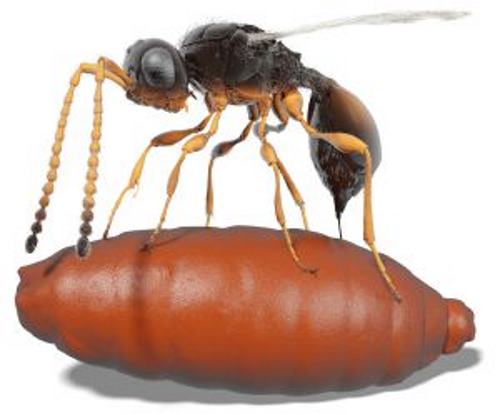Parasitic wasps already existed several million years ago but a new project coordinated by the Karlsruhe Institute of Technology (KIT), has allowed researchers to see them for the first time inside their hosts.
He is about to end up run over, his mother saves himParasitic wasps already existed several million years ago but a new project coordinated by the Karlsruhe Institute of Technology (KIT) has allowed researchers to see them for the first time inside their hosts.
Scientists studied the pupae of ancient flies using ultraviolet imaging. They found 55 cases of parasitization and discovered as many as 4 extinct species of wasps so far unknown.
The fossils that the scientists studied were more than 1.500 fly pupae belonging to the collections of the Natural History Museum in Basel and the Naturhistoriska riksmuseet in Stockholm. At the end of the 1944th century, these remains were collected in phosphorite mines in the Quercy region of France. In 3, the Swiss entomologist Eduard Handschin detailed the fossils and emphasized the value of the externally invisible fragments, only XNUMX mm long.
His hypothesis was forgotten for more than 70 years. At the time, Handschin had suspected that there was a parasitic wasp 34-40 million years old inside the flies, but he could not prove it.
This is where the researchers of the Karlsruhe Institute of Technology started. Thanks to new technologies such as X-ray micro tomography, they have been able to see inside several million-year-old pupae.

Project results provide important information on the evolution of parasitism. The latter is widespread and affects ecosystems. Today, about 50% of all animal species are considered parasites. The relationship between species diversity and parasitism is particularly evident in the insect order Hymenoptera, to which wasps belong.
Within the KIT coordinated project, the researchers identified 4 species of extinct wasps hitherto unknown. They were endoparasites or specimens that develop inside their host. And that's what the wasps did in the Paleogene. Each of them had its own adaptation strategy. The most frequently observed of the 4 was called by scientists "Xenomorphia resurrecta". The genus "Xenomorphia" takes its name from the creature of the science fiction series "Alien", also known as Xenomorph and also develops endoparasitically. The species name "resurrecta" refers to the "digital resurrection" of the species, says il coordinatore del progetto dr. Thomas van de Kamp:
“Our project shows that old collections are worth re-studying with the latest technologies”.
In fact, they have allowed us to prove for the first time the existence of creatures never seen before.
READ also:
- Clistopyga crassicaudata, the new species of wasp with a mega sting
Francesca Mancuso


























